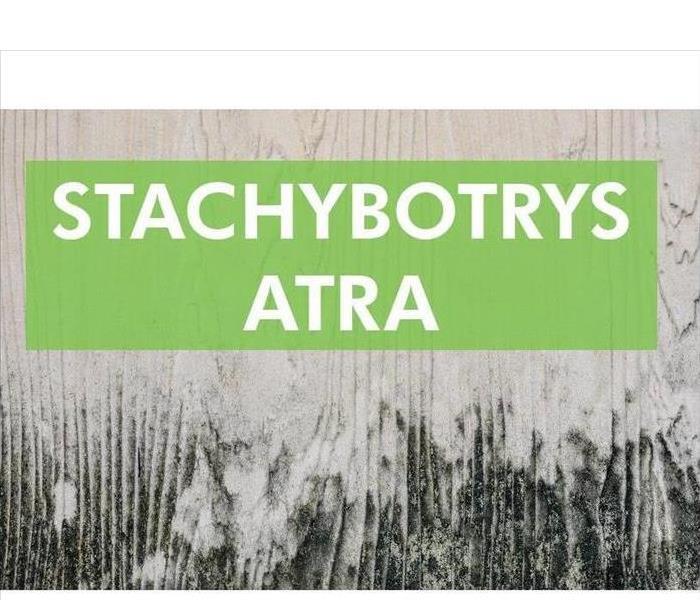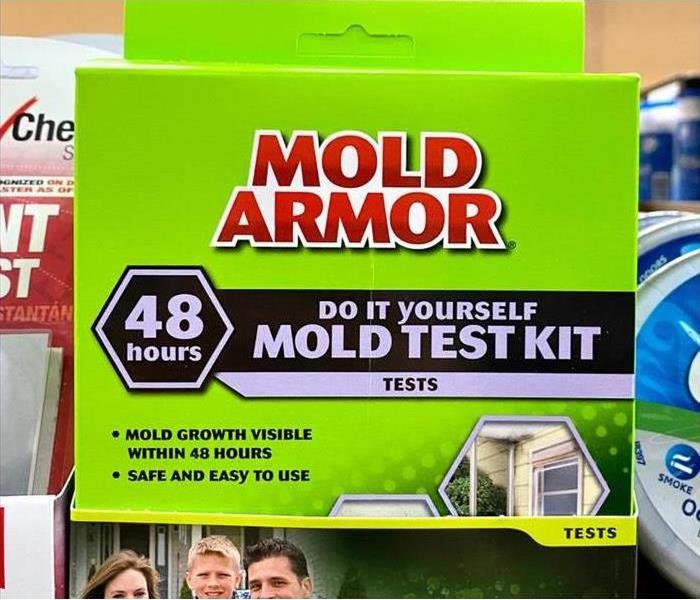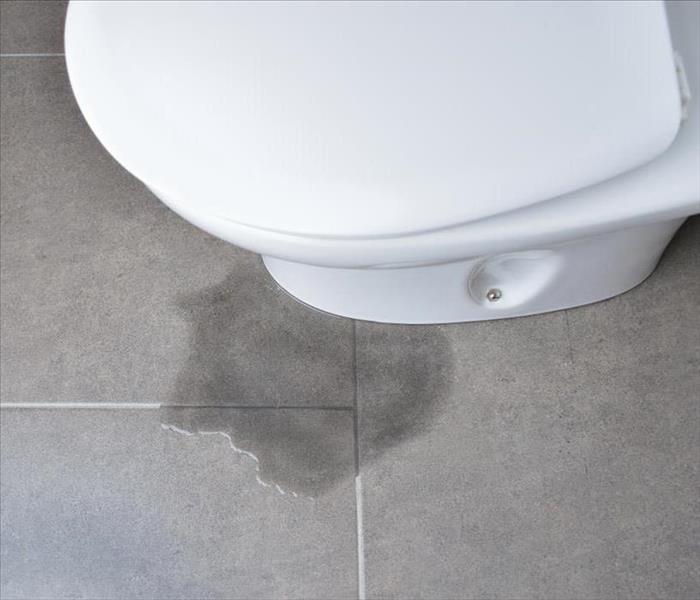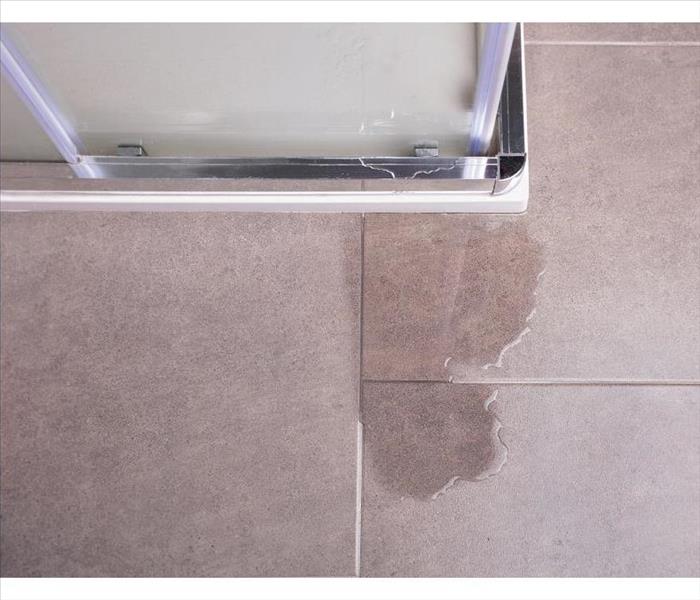Archived Why SERVPRO Blog Posts
Why Does Mold Smell?
9/30/2022 (Permalink)
 Stachybotrys, commonly called black mold
Stachybotrys, commonly called black mold
You probably associate mold with a damp, musty odor. In fact, you’d probably sniff it out before you ever saw it. Most of the time, you’re actually detecting the fungus itself; sometimes, though, you’re smelling mycotoxin production, which happens when specific types of mold create toxins.How Do I Know if It’s Mold?
How do you tell the difference between mold and a weird stench? Here are three signs you have mold in your building:
- The scent doesn’t go away when you open windows or run fans.
- The air smells damp even when the windows are open.
- You’re sneezing all the time when you’re in a specific area.
Why Does Mold Have an Odor?
The aroma doesn’t come from the fungus spores themselves, but rather from something called microbial volatile organic compounds. Some MVOCs are waste products of growing mold, including mycotoxin gases. MVOCs’ odors depend on how much moisture is around and the material the mold is growing on.
Stachybotrys, commonly called black mold, smells like cat urine and freshly cut grass. Chaetomium has an earthy or damp odor. Other species have scents like anything from baking bread to stinky socks to wet dog.
What if I Find Mold?
These funguses can hide in walls, carpets, and insulation, coming from water leaks or damp weather. You can help keep mold damage out of your building by:
- Keeping humidity levels low
- Fixing leaking pipes, roofs and windows
- Cleaning and drying a space after flooding
- Properly ventilating laundry, cooking and shower spaces
If you do find signs of mold, such as that musty odor, make sure the spores can’t migrate into other parts of your building. Put up plastic tarps to enclose the space and use HEPA air filters to keep the air clean. Don’t try to clean up mycotoxin contamination yourself. Instead, work with a mold remediation company in Country Life Acres, MO. Professionals have the proper equipment to get rid of the damage safely.
Do DIY Mold Tests Work?
8/20/2022 (Permalink)
 Do DIY Mold test work?
Do DIY Mold test work?
Learn Why These Kits Are So Much Less Accurate
A business or commercial property owner might be tempted to try to save money by using a do-it-yourself or home mold test. Learn why these kits are so much less accurate than laboratory analysis of samples gathered by an indoor environmental specialist at a building in Maryland Heights, MO.
DIY Tests Detect Mold Spores
Airborne mold spores are present indoors and outdoors. A positive result on an amateur mold testing kit can indicate the presence of spores in air. These tests cannot identify growth or the toxicity of fungi.
Professional mold testing involves the collection and submission of samples from a building with a known or suspected mold infestation. A test may assess whether spore concentrations are high enough to suggest hidden mold growth or determine whether an infestation is toxic.
Lab Testing Identifies Species
There are anywhere from 100,000 to 300,000 types of mold. The positive identification of any species must be left to scientists in a lab. It may be necessary to cultivate spores from samples to determine which species of mold is present and pursue the best cleanup method.
Depending on when a property owner calls an indoor environmental specialist, testing may be used to determine if an infestation is present prior to removal and cleanup or after remediation to confirm all mold has been removed.
Professional Testing Is the Best Option
Consumer mold tests range in price. Any money a building or business owner spends on a DIY kit to test for mold is wasted, as professional sampling and laboratory cultivation and analysis are necessary to determine mold species and toxicity.
An indoor environmental specialist can take the samples necessary to detect mold growth and identify species of fungi. If hidden mold is growing within the walls of a commercial property in Maryland Heights, MO, an inspection and mold test are the best ways to assess the severity of the infestation.
3 Easy Steps To Replace A Leaking Toilet
6/28/2022 (Permalink)
 Replacing a leaking toilet is quick and easy to do.
Replacing a leaking toilet is quick and easy to do.
How to Replace a Leaking Toilet
When you have a leaking toilet in your Chesterfield, MO, home, you want to replace it before there is severe damage done to the floor around it. Replacing a toilet can quickly be done when following these three easy steps.
1. Turn Off the Water
Turn the water valve behind the toilet clockwise until it can't turn anymore. Next, flush your toilet multiple times to get as much water out of the tank and bowel as possible. Remove the tank's lid and use a small cup, sponge or wet/dry vacuum to get the rest of the water out. Once the water has been removed, disconnect the water supply line from the toilet.
2. Remove the Old Toilet
To remove the leaking toilet, take off both nuts on the bolts on either side of the toilet's base. Gently wiggle the toilet to help loosen it from the wax ring. When the toilet starts to have more give, lift it directly up and move it out of the way. Placing it on a tarp or cardboard can help keep any water or dirt from getting on the floor. After removing the toilet, inspect the ground underneath where it was seated. If you notice any soft spots or rotting areas, call some water damage professionals to address the issue before replacing the toilet.
3. Replace the Seal and Replace the Toilet
Most experts on toilet repair recommend using a silicone seal for a toilet instead of a wax one because wax seals are so temperamental. Clean the flange on the floor and replace the seal with your new silicone one. Position your new toilet over the seal, ensuring the holes in the base line up with the bolts on the floor. Lower the toilet and have a friend apply pressure to it while you tighten the nuts on the bolts. Reconnect the water supply line and turn the water main back on. Allow the toilet tank to fill, and the toilet is ready to be used.
Replacing a leaking toilet is quick and easy to do when you know the right steps to follow.
Our Newest General Manager!
6/21/2022 (Permalink)
 Congratulations to our newest general manager, Steve Burgdorf!
Congratulations to our newest general manager, Steve Burgdorf!
It’s time to announce our newest General Manager, Steve Burgdorf! Starting as a part-time employee over ten years ago, owner Kevin Thole says Steve has been instrumental to our mission and growth, rising through the ranks to his newest position.
In addition to his glow-up (featured above??), Steve has gained invaluable wisdom in the world of restoration and serving others. A typical day in the life of Steve includes showing up early and working late, solving problems and making sure operations run smoothly and efficiently. And while he’s great at those things, Steve’s favorite part of the job is helping people who have had their lives upended from property damage get back on their feet. There’s always something new, and the opportunity to see others reach their personal and professional goals gets Steve excited every day.
Steve is inspired by the positive and optimistic people around him — an optimism he also reflects — and relishes a challenge. Even when days are long and tough, Steve says that it is rewarding to know you’ve made a positive difference in people’s lives, and that makes everything worth it.
Thanks for all you do Steve! You’re a rockstar!
Stay tuned for an announcement regarding Steve’s other promotion this week!
Quickly Discovering the Cause of a Shower Leak Can Prevent Major Damage
1/24/2022 (Permalink)
 A leaking shower is more than just a minor annoyance.
A leaking shower is more than just a minor annoyance.
A leaking shower is more than just a minor annoyance – let go, it can become a structural nightmare. You should always check things out at the first sign of a bathtub leak to avoid a disastrous situation from occurring in your home in Creve Coeur, MO. A leaking shower could be anything from loose joints in the pipes to a simple shower pan leak and can range from a simple repair to all-out restoration. There are a few things that can be checked to help you ascertain where the leak is coming from and how serious the situation is.
How To Find the Source of a Shower Leak
•Inspect the plumbing components to see if they are wet or leaking
•Check the drainpipe and drain fittings to see that it is properly seated and caulked
•Ensure that any caulking is sound and free of breaks
•Check doors for gaps in the seal and around hinges to make sure they close tightly
•Look for any cracks or gaps around the shower pan that may be allowing water to get through
A bathtub leak or shower pan leak can sometimes be found by inspecting the ceiling of the room below the bathroom. Water stains or wood that is dark and wet is a reliable sign that something is heading south, as are bulging ceilings, wet carpet or sheetrock. In a tub, look for a loose seal around the drain fittings. This is the easiest fix and a good place to start. If you are dealing with a shower pan, likewise check the seal around the drain first. Also, inspect for cracks or gaps. In a tiled shower, the problem can be as simple as a loose tile that water is getting underneath or the need to re-caulk between tiles.
If you do find a leak, call on a professional restoration service in Creve Coeur, MO, to do an assessment and help remediate the situation before it gets worse. They can help protect your home and belongings from water damage. Checking regularly for a bathtub leak and taking proactive steps can give you peace of mind.



 24/7 Emergency Service
24/7 Emergency Service




